General description
We are committed to bringing you greener alternative products, which adhere to one or more of The 12 Principles of Green Chemistry.This antibody is Preservative-free, produced without the harm or sacrifice of animals and exceptionally stable to allow for ambient shipping and storage if needed and thus aligns with "Waste Prevention", "Designing Safer Chemicals" and "Design for Energy Efficiency". Click here for more information.
ZooMAb® antibodies represent an entirely new generation of recombinant monoclonal antibodies.Each ZooMAb® antibody is manufactured using our proprietary recombinant expression system, purified to homogeneity, and precisely dispensed to produce robust and highly reproducible lot-to-lot consistency. Only top-performing clones are released for use by researchers. Each antibody is validated for high specificity and affinity across multiple applications, including its most commonly used application. ZooMAb® antibodies are reliably available and ready to ship when you need them.
Specificity
Clone 1C13 is a ZooMAb® Rabbit recombinant monoclonal antibody that specifically detects STAT6. It targets an epitope within 25 amino acids from the N-terminal region.
Immunogen
KLH-conjugated linear peptide corresponding to 25 amino acids from the N-terminal region of human STAT6.
Application
Quality Control Testing
Evaluated by Western Blotting in HepG2 cell lysates.
Western Blotting Analysis: A 1:1,000 dilution of this antibody detected STAT6 in HepG2 cell lysates.
Tested Applications
Immunohistochemistry (Paraffin) Analysis: A 1:100 dilution from a representative lot detected STAT6 in human fallopian tube tissue sections.
Flow Cytometry Analysis: 1 μg from a representative lot detected STAT6 in one million HepG2 cells.
Affinity Binding Assay: A representative lot of this antibody bound STAT6 peptide with a KD of 1.9 x 10-6 in an affinity binding assay.
Note: Actual optimal working dilutions must be determined by end user as specimens, and experimental conditions may vary with the end user
Target description
Signal transducer and activator of transcription 6 (UniProt: P42226; also known as IL-4 Stat) is encoded by the STAT6 gene (Gene ID: 6778) in human. The Janus kinase (JAK)/signal transducers and activators of transcription (STAT) signaling pathway play an important role in cell proliferation, cell differentiation, cell migration, and cell death. It is the principal signaling mechanism for a variety of cytokines and growth factors. Constitutive activation or dysregulation of JAK/STAT signaling can result in inflammatory disease, erythrocytosis, gigantism, and leukemia. In mammalian cells seven different STATs been recognized. They contain a conserved tyrosine residue near the C-terminus, which is phosphorylated by JAKs. This tyrosine phosphorylation allows the dimerization of STATs by interacting with a conserved SH2 domain. In their latent form STATs are located in the cytoplasm and upon phosphorylation they are transported into the nucleus by an importin-dependent mechanism. In the nucleus, dimerized STATs bind to specific regulatory sequences to activate or repress transcription of target genes. Activated STATs are reported to stimulate transcription of the SOCS genes and the resulting SOCS proteins bind to phosphorylated JAKs and block their activity. The SOCS can also bind to phosphotyrosines on the receptors and block the recruitment of STATs to these receptors. STAT6 is considered to be the key to the IL-4 signaling pathway and a driver of Th2 cell differentiation. It carries out a dual function: signal transduction and activation of transcription. It is involved in several distinct aspects of allergic inflammatory disease, such as airway hyperresponsiveness, eosinophilic infiltration, and responses of mast cells. STAT6-deficient mice are reported to lack most of the physiologic functions associated with IL-4, in particular the ability of IL-4 to induce the in vitro differentiation of Th2 cells. Three isoforms of STAT6 have been described that are produced by alternative splicing. This ZooMAb® recombinant monoclonal antibody, generated by our propriety technology, offers significantly enhanced specificity, affinity, reproducibility, and stability over conventional monoclonals. (Ref.: Chu-K-H., et al. (2021). Front. Immunol. 11; 615868; Lu, X., et al. (2007). Mol. Cell Biol. 27(6); 2166-2179).
Physical form
Purified recombinant rabbit monoclonal antibody IgG, lyophilized in PBS with 5% Trehalose, normal appearance a coarse or translucent resin. The PBS/trehalose components in the ZooMAb formulation can have the appearance of a semi-solid (bead like gel) after lyophilization. This is a normal phenomenon. Please follow the recommended reconstitution procedure in the data sheet to dissolve the semi-solid, bead-like, gel-appearing material. The resulting antibody solution is completely stable and functional as proven by full functional testing. Contains no biocide or preservatives, such as azide, or any animal by-products. Larger pack sizes provided as multiples of 25 μL.
Reconstitution
300 μg/mL after reconstitution at 25 μL per vial. Please refer to guidance on suggested starting dilutions and/or titers per application and sample type.
Storage and Stability
Recommend storage of lyophilized product at 2-8°C; Before reconstitution, micro-centrifuge vials briefly to spin down material to bottom of the vial; Reconstitute each vial by adding 25 μL of filtered lab grade water or PBS; Reconstituted antibodies can be stored at 2-8°C, or -20°C for long term storage. Avoid repeated freeze-thaws.
Legal Information
ZooMAb is a registered trademark of Merck KGaA, Darmstadt, Germany
Disclaimer
Unless otherwise stated in our catalog or other company documentation accompanying the product(s), our products are intended for research use only and are not to be used for any other purpose, which includes but is not limited to, unauthorized commercial uses, in vitro diagnostic uses, ex vivo or in vivo therapeutic uses or any type of consumption or application to humans or animals.
- UPC:
- 12352207
- Condition:
- New
- Weight:
- 1.00 Ounces
- HazmatClass:
- No
- WeightUOM:
- LB
- MPN:
- ZRB1949-4X25UL
- Product Size:
- 4/EA












